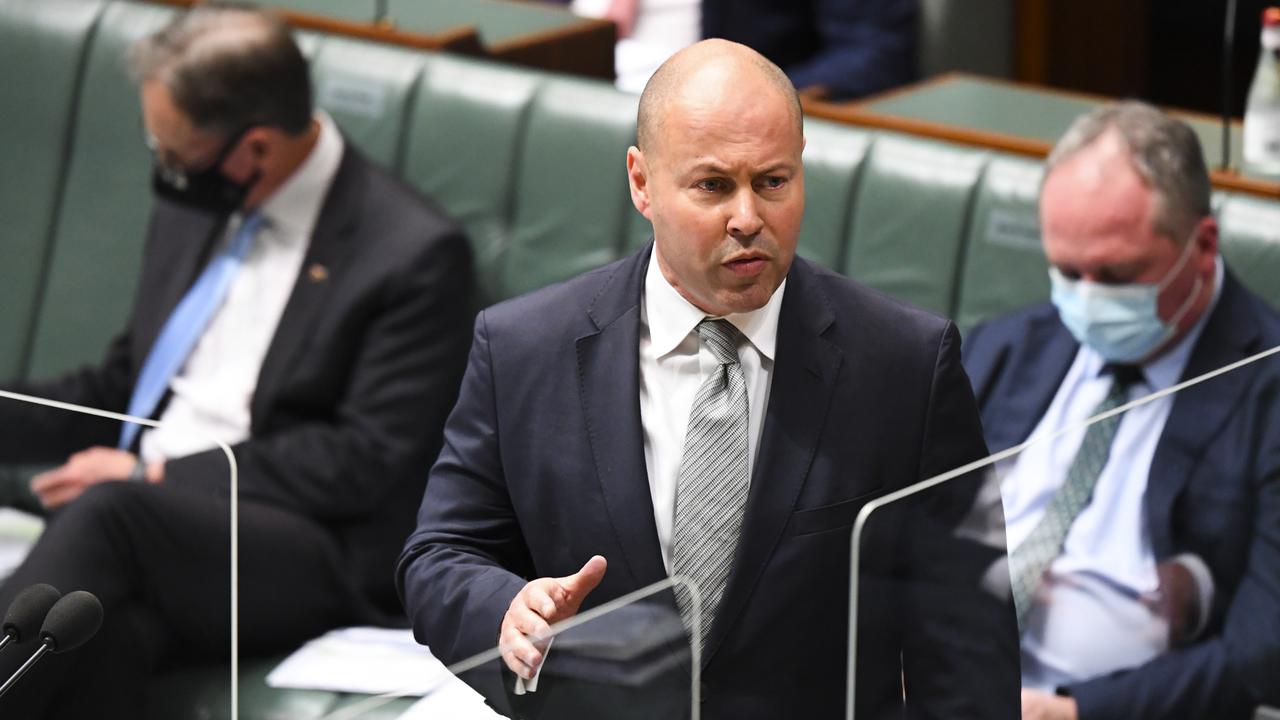Treasurer Josh Frydenberg says the number of female Liberal politicians in federal parliament isn't high enough - but the party's current status is significantly lower than the 38 per cent he suggests.
Depending on the criteria used in calculations, between 26.7 and 30.4 per cent of all Liberal Party parliamentarians are women. Mr Frydenberg's figure is only correct for the Senate.
The treasurer made the comment in an appearance on ABC's Insiders program on December 5 during a discussion about sex discrimination commissioner Kate Jenkins' critical report into parliamentary workplace culture. The report recommended targets be set to achieve gender balance among parliamentarians.
When asked about his party's female representation in the federal parliament, Mr Frydenberg said: "Well, in the Liberal Party, we've been at about 38 per cent. And we've got to do better." (Video mark 13min 25sec).
After host David Speers queried the 38 per cent figure, suggesting it was in fact only 25 or 26 per cent, Mr Frydenberg replied: "Well, it's lower in the house (of representatives), higher in the Senate."
When contacted by AAP FactCheck about Mr Frydenberg's comments, a spokeswoman said the treasurer was making the point that around 38 per cent of Liberal Party senators were female.
However, Mr Frydenberg's on-air remarks did not include the qualification that he was only talking about the party's senators. His comments were initially interpreted as referring to all Liberal Party parliamentarians in a Guardian news report about the interview.
One analysis of the gender composition of each party in the Australian parliament is detailed in a parliamentary library research paper. It shows that, as of November 15 2021, the Liberal Party had 60 MPs in the lower house and 30 senators in the upper house, inclusive of Queensland Liberal National Party (LNP) politicians who sit with the Liberals.
Of those 90 federal politicians across both chambers, 24 were women (26.7 per cent), while 66 were men (73.3 per cent). The figures do not include Greg Mirabella, who is yet to take up the seat of retired Liberal senator Scott Ryan, who resigned on 13 October.
Excluding LNP politicians who sit with the party, the Liberals have 69 parliamentarians - of whom 21 (30.4 per cent) are women.
Mr Frydenberg was, however, correct to say the Liberal Party's proportion of women is higher in the Senate than in the House of Representatives. The research paper showed that 21.7 per cent of lower house Liberals were women compared to 36.7 per cent in the Senate, including LNP parliamentarians who sit with the party.
Excluding LNP politicians, the Liberal Party breakdown is 25.6 per cent female in the lower house and 38.5 per cent female in the Senate.
In comparison, women comprised 46 of Labor's 94 federal parliamentarians (48.9 per cent), six out of 21 National Party parliamentarians (28.6 per cent) and six out of 10 Green parliamentarians (60 per cent), according to the research paper.
Overall, women made up 38.5 per cent of all federal parliamentarians, excluding Mr Mirabella. The proportion was significantly higher in the Senate than in the House of Representatives; 53.3 per cent of senators were women, compared to 31.1 per cent of lower house MPs.
At the time of writing, Australia sat 56th in the world ranking for the proportion of female lower house MPs, according to data from the Inter-Parliamentary Union (IPU), a global membership body for national parliaments.
Rwanda tops the list with 49 women among its 80 MPs (61.3 per cent), while New Zealand is sixth with women making up 49.2 per cent of MPs. Australia's relatively high proportion of female senators does, however, put it among the top nations when comparing the percentage of women in upper house chambers.
The Verdict
Women do not make up 38 per cent of the Liberal Party's federal parliamentarians; the figure is only correct when applied to the Senate alone.
When both the upper and lower houses are considered, 26.7 per cent of those on the Liberal Party benches are female. The figure rises to 30.4 per cent when members of the LNP are excluded.
Misleading – The claim is accurate in parts but information has also been presented incorrectly, out of context or omitted.
AAP FactCheck is an accredited member of the International Fact-Checking Network. To keep up with our latest fact checks, follow us on Facebook, Twitter and Instagram.












